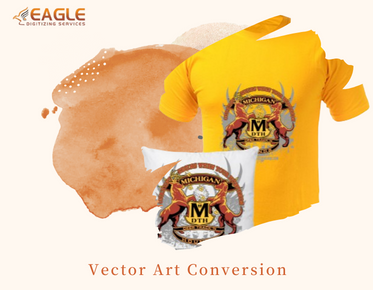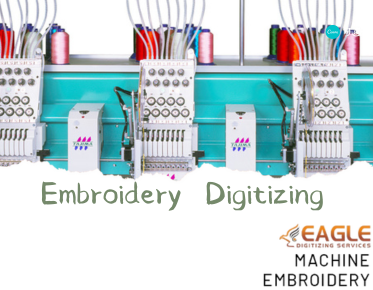How Can Designers Maintain Line Precision and Detail Accuracy in Vector Design?
Vector design is a critical aspect of modern digital art, widely used for everything from logo creation to intricate illustrations. The technology behind vector graphics allows for images to be scaled infinitely without losing quality. This is due to vector graphics being composed of mathematical equations rather than pixels. For designers looking to maintain line precision and detail accuracy in their vector designs, there are several best practices and techniques that can ensure their work achieves the highest standards.
Understand the Fundamentals of Vector Design
To maintain line precision, designers must have a thorough understanding of vector graphics software. Popular tools like Adobe Illustrator and Corel DRAW offer expansive features that help manage precision. By leveraging these tools' capabilities, such as the pen tool and vector paths, designers can create smooth and precise lines. Additionally, mastering the use of anchor points and Bézier curves is crucial for creating and manipulating paths with high precision.
Each vector graphic component, from lines to curves, is defined mathematically, allowing for unparalleled precision in digital artwork. This mathematical nature also facilitates the easy modification of individual elements without altering the entire composition, further aiding in maintaining detail accuracy. An essential strategy is ensuring that the workspace is set to the correct dimensions and units, as working on too small or too large scales can lead to inaccuracies when the art is scaled.
Leverage Raster to Vector Conversion Techniques
When dealing with raster images, converting them into vectors can pose challenges in maintaining detail. Using raster to vector conversion services can significantly enhance the sharpness and detail in the final vector product. Techniques such as vectorization, where an image is traced line by line and dot by dot, play a vital role in ensuring that the final vector image retains the original design's essence and precision【4:1†source】.
Eagle Digitizing, for instance, is renowned for converting intricate designs into clean, scalable vectors with meticulous attention to detail. Their services include converting even the most complex raster images into detailed vector formats, preserving the original's intricacies【4:1†source】.
Utilize Automated Tools for Precision
Automation tools within vector software can aid in maintaining precision. For instance, using features like snapping, alignment tools, and grids can prevent errors in line placement. Automated features in vector software often include live previews and smart guides that help designers align elements perfectly without relying solely on manual adjustments.
Advanced software solutions also offer precision tools that allow for the distinction between intricate details. By setting preferences and tolerances within these tools, a designer can consistently produce precise and detailed illustrations. Automated alignment and trimming features ensure elements fit perfectly within the design's overall structure, further enhancing accuracy.
Manual Adjustments and Fine-Tuning
While automation is beneficial, manual adjustments are often necessary to achieve the highest level of precision and detail. Designers should develop a keen eye for detail, which aids in manually adjusting anchor points and tweaking Bézier curves for the smoothest transitions. Regularly zooming in on parts of the design to make detailed adjustments ensures that no minute detail goes unnoticed.
Experimenting with different stroke weights and colors can also make a significant difference in the visual perception of line precision and detail accuracy. It is essential to inspect every aspect of the vector design, from individual lines to the entire composition, to ensure coherence and precision.
Regular Quality Assurance Checks
Implementing a regular quality assurance (QA) process can greatly benefit designers concerned with precision and detail accuracy. By periodically reviewing their work against quality checklists, designers can catch inconsistencies or errors early, reducing the need for extensive rework. Tools like proofing and version control can be quite useful here, allowing designers to track changes and revert to previous versions if necessary.
For detailed artwork, establishing external verification processes, such as peer reviews or feedback from other design professionals or clients, can provide fresh perspectives on the design's precision and detail accuracy.
Stay Updated with Industry Techniques
The vector design industry is constantly evolving, with new techniques and tools being developed continuously. By staying informed about the latest advancements in vector technology, designers can leverage new features and methodologies that enhance the precision and accuracy of their designs. Participating in webinars, online courses, and design forums can provide valuable insights into cutting-edge practices.
For instance, Eagle Digitizing's commitment to updating their processes ensures that their designs remain at the forefront of quality vector art. Their vast experience and recognition in the field extend to providing insights into practices that maintain precision across various projects【4:1†source】.
The Future of Vector Design Precision
As technology advances, the precision and detail that can be achieved in vector design are bound to improve. Emerging features like AI-driven design tools and augmented reality could become part of the everyday toolkit for designers, allowing for even higher levels of accuracy and creativity. Designers who embrace these new technologies while maintaining traditional precision methods will lead the way in setting new standards for vector graphics.
In conclusion, maintaining precision and accuracy in vector design requires a combination of mastering traditional techniques, leveraging advanced tools and technologies, and staying abreast of industry developments. Designers who incorporate these strategies into their creative process will produce compelling and precise vector designs, setting themselves apart in the dynamic field of graphic design.


.png)
